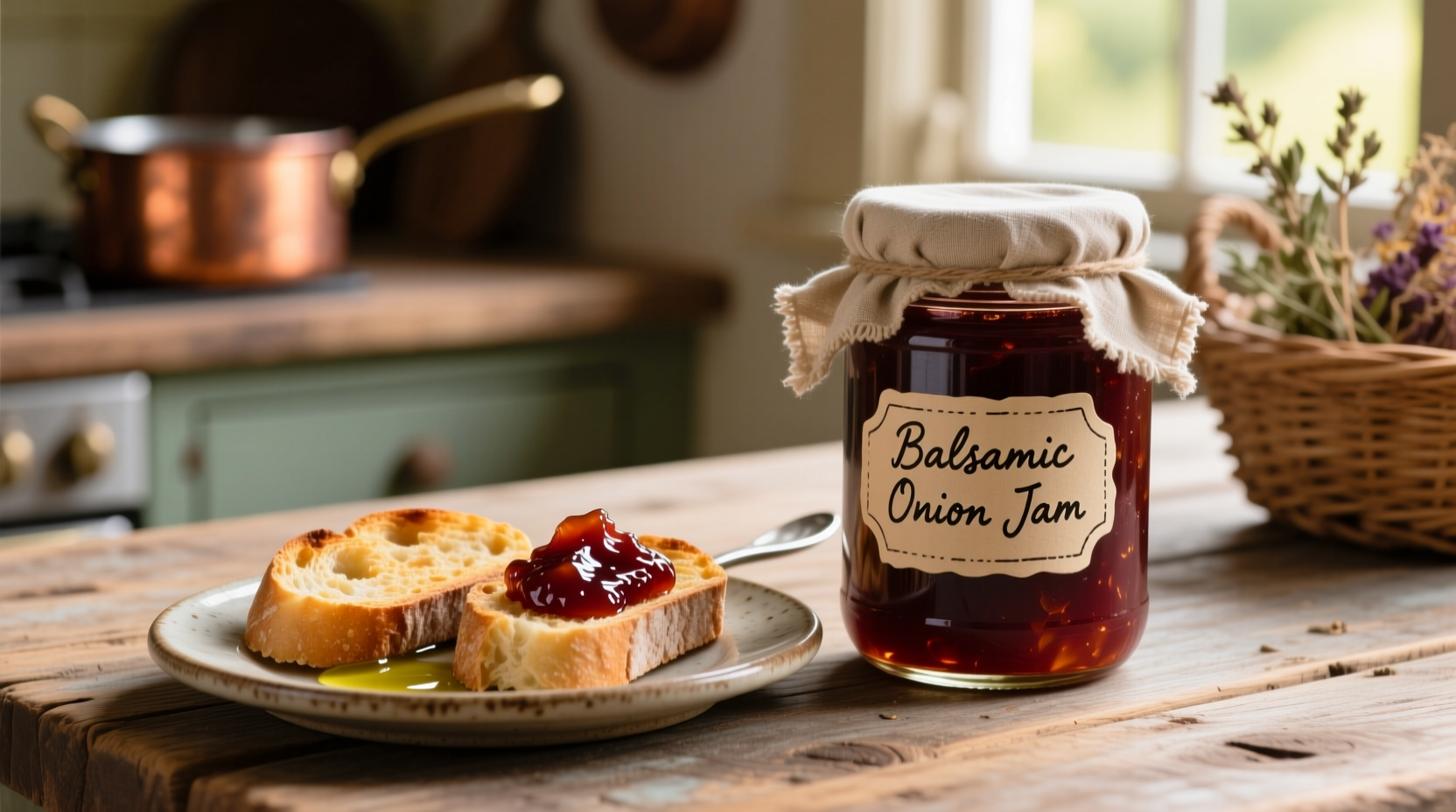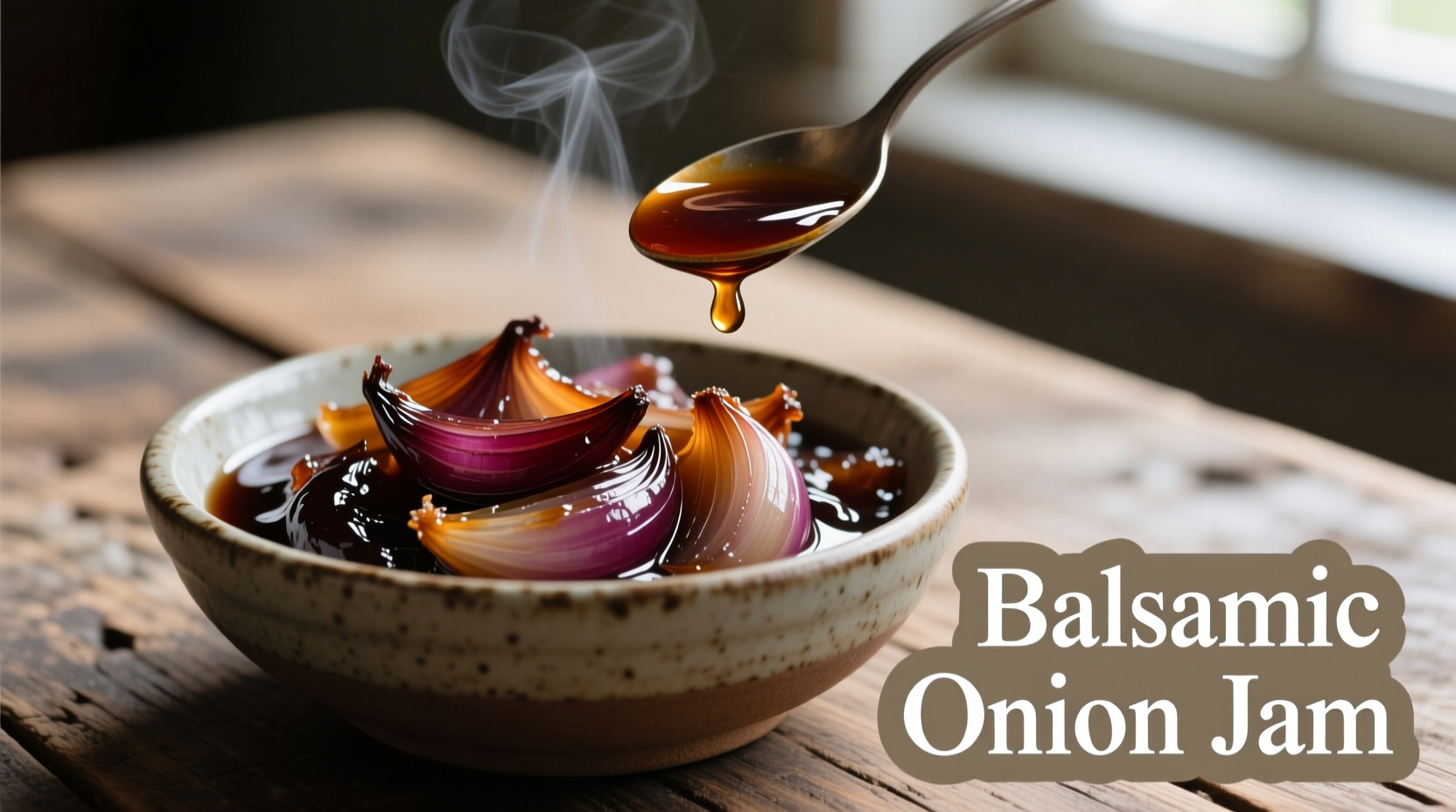Transform your cooking with this kitchen powerhouse that professional chefs reach for when they need instant depth and complexity. Unlike regular onion jam, the addition of quality balsamic vinegar creates a sophisticated flavor profile that works magic across multiple meal categories—from breakfast to dessert.
What Makes Balsamic Onion Jam Special
The magic happens through a careful balance of sweet caramelized onions and the complex acidity of aged balsamic vinegar. As onions slowly cook down over low heat, their natural sugars concentrate while the vinegar reduces, creating a rich, glossy spread with layered flavors. The best versions use traditional balsamic vinegar from Modena (protected by Consorzio Tutela Aceto Balsamico di Modena regulations) which contains no added sugars or thickeners.
| Feature | Regular Onion Jam | Balsamic Onion Jam |
|---|---|---|
| Primary Acid Component | Vinegar or lemon juice | Aged balsamic vinegar |
| Flavor Profile | Sweet with mild tang | Complex sweet-tart with wine notes |
| Color | Golden amber | Deep mahogany |
| Best Pairings | British pies, roast beef | Chevre, pork tenderloin, goat cheese |
Top 7 Culinary Applications That Shine
1. The Ultimate Cheese Companion
Balsamic onion jam creates perfect harmony with creamy cheeses. Spread on a cheese board alongside:
- Goat cheese (the classic pairing—try New England Cheesemaking Supply Company's recommendations)
- Aged gouda for contrasting sweet-savory notes
- Fresh mozzarella in caprese sandwiches
2. Elevate Your Sandwich Game
Replace standard condiments with a thin layer of balsamic onion jam for instant sophistication:
- Grilled cheese with sharp cheddar
- Turkey and brie on sourdough
- Veggie wraps with hummus and roasted peppers
3. Protein Perfecting Partner
This condiment works as both finishing touch and cooking ingredient:
- Glaze for pork tenderloin during last 10 minutes of roasting
- Spread on salmon fillets before broiling
- Mix with Greek yogurt for chicken sandwich spread

When Balsamic Onion Jam Isn't the Right Choice
Understanding context boundaries prevents culinary missteps. Avoid using balsamic onion jam in these situations:
- Delicate seafood dishes—its robust flavor overpowers subtle fish like sole or flounder
- Traditional Italian cuisine—authentic Italian cooking rarely combines balsamic with onions in this preparation
- Dairy-free diets—many commercial versions contain butter (check labels)
- Low-sodium diets—naturally high in sodium from caramelized onions
Simple Homemade Recipe (20 Minutes)
Store-bought versions work well, but homemade gives superior flavor control. This chef-approved ratio creates perfect balance:
- 3 large yellow onions, thinly sliced
- 1 cup quality balsamic vinegar
- 2 tbsp brown sugar
- 2 tbsp olive oil
- 1 tsp fresh thyme leaves
- Pinch of sea salt
- Sauté onions in olive oil over medium-low heat until golden (15 minutes)
- Add vinegar, sugar, thyme and salt; simmer until thickened (5-7 minutes)
- Cool completely before storing in airtight container
- Refrigerate for up to 2 weeks or freeze for 3 months
Professional tip: For restaurant-quality texture, add 1 tsp cornstarch slurry during final thickening phase if needed. The USDA Food Safety and Inspection Service recommends proper storage temperatures below 40°F for cooked vegetable products.
Buying Guide: What to Look For
When purchasing commercial balsamic onion jam, check these quality indicators:
- Ingredient order—onions and balsamic vinegar should be first two ingredients
- No artificial preservatives—avoid potassium sorbate or sodium benzoate
- Vinegar quality—"aged balsamic vinegar of Modena" indicates authentic product
- Sugar content—should be less than 15g per serving for balanced flavor
Troubleshooting Common Issues
Fix these frequent preparation problems:
- Too sweet?—Add splash of red wine vinegar and simmer 2 minutes
- Too thin?—Continue simmering uncovered until desired consistency
- Bitter notes?—Balance with 1 tsp honey and pinch of salt
- Overly acidic?—Stir in 1 tbsp unsalted butter off-heat











 浙公网安备
33010002000092号
浙公网安备
33010002000092号 浙B2-20120091-4
浙B2-20120091-4